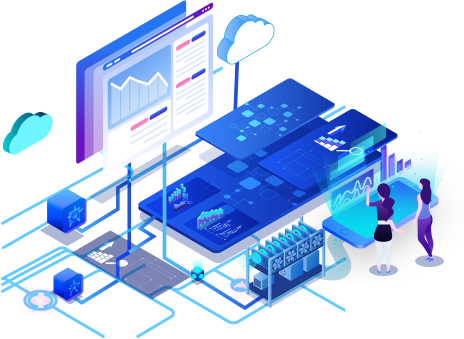
Two-thirds of the problems in traditional construction projects are related to information communication. 10% to 33% of the cost increase is related to information communication problems. Engineering change cost caused by information communication problems accounts for about 3% to 5% of the total project investment. The problems include:

 System Value
System Value

 Our Advantages
Our Advantages

In 2018, the Hong Kong Government issued "Construction Industry 2.0-Time for Change". It proposed that innovation, specialization and activation can reform and upgrade the construction industry to enhance its productivity and sustainability, strengthen the regulation and quality assurance, improve site safety and reduce environmental impact.
Since then, BIM has been widely adopted in the industry and has proven its benefits. The Common Data Environment (CDE) is a workflow technology solution that works closely with BIM. It is regarded as one of the pillars of digital architecture. CDE is a tool to further improve the effective use of BIM. The adoption of CDE in the workflow helps to ensure that the BIM models can serve as a single source of fact for collaboration throughout the project lifecycle. It highlights the importance of CDE as an information management and collaboration tool for BIM models and information, as well as the entire project lifecycle for any building asset.

 System Overview
System Overview

 System Value
System Value

 Our Advantages
Our Advantages

More and more Chinese engineering companies are collaborating with international engineering companies to undertake international engineering projects. Chinese engineering companies need a digital management system that meets international standards to demonstrate their management level.

 System Overview
System Overview

 System Value
System Value

 Our Advantages
Our Advantages

With the advent of the digital age, digitizing the process of handling large volumes of paper documents will effectively improve work efficiency and compliance. The HKSAR Government's cost audit process for infrastructure projects encountered several unique problems. Firstly, each contractor submits invoices in different formats, some of which are handwritten and contain a mixture of Chinese and English characters and various symbols. As the projects typically use the NEC4 ECC contract management model, hundreds of companies need to be processed and audited on a monthly basis, with each company's documents often running to several pages, requiring many hours from experienced professionals.
OCR quickly converts important paper documents such as invoices, purchase orders, cheques, receipts, etc. into structured data. Tens of thousands of paper documents are automatically converted without manual input, not only increasing work efficiency, but also reducing error rates and ensuring data accuracy and integrity.
Whether its scanning invoices, cheques, purchase orders, delivery notes and other various documents, the system can quickly recognize key information and automatically generate payment requests. This digital process greatly simplifies the payment process, making it more transparent and efficient.
Through data modelling and training, AI technology can automatically recognize data, identify anomalies and issue timely alerts. This significantly reduces the time required for manual recognition and verification, as well as the risk of potential errors, making the data more reliable and transparent. As the project progresses, new contractors and suppliers may be added all the time, and their invoices may come in different formats, potentially requiring AI retraining. Traditional AI (small models) is no longer effective in dealing with this challenge. After comparing different solutions, we found that AI/LLM (large models) are effective in addressing this challenge.
EPC Solutions is committed to protecting the security and privacy of user data. All data is subject to strict encryption measures during transmission and storage to ensure that information cannot be leaked or tampered with. Users can confidently use this application and enjoy its convenience without worrying about the risk of data leakage.

 System Value
System Value

 Our Advantages
Our Advantages